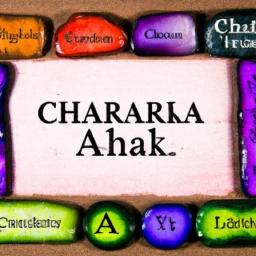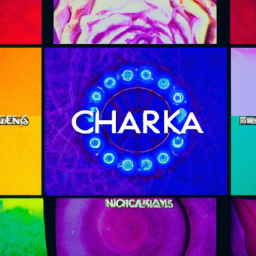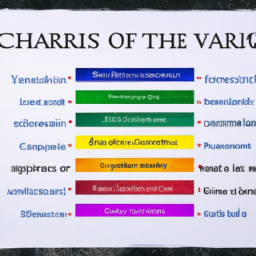Chakras are an integral part of Eastern philosophy and spiritual practices. Derived from the Sanskrit word meaning “wheel”, chakras refer to the energy centers in the human body. These energy centers are believed to be connected to our physical, emotional, and spiritual well-being.
The History of Chakras
The concept of chakras dates back to ancient India, with references found in Hindu and Buddhist texts. The earliest known mention of chakras can be found in the Vedas, which are a collection of sacred scriptures dating back to 1500 BC.
Over time, the concept of chakras has been adopted by various spiritual practices such as yoga, reiki, and tantra. Each tradition has its own interpretation and understanding of chakras, but the underlying concept remains the same – the existence of invisible energy centers in the body.
The Meaning of Chakras
Chakras are often depicted as spinning wheels of energy, with each chakra being associated with a specific color and location in the body. They are believed to be responsible for the flow of energy throughout the body and are connected to various physical, emotional, and spiritual aspects of our being.
There are seven main chakras in the human body, with each chakra having its own unique symbolism and meaning:
- Root Chakra (Muladhara): Located at the base of the spine, this chakra represents stability, security, and our connection to the physical world.
- Sacral Chakra (Svadhisthana): Located in the lower abdomen, this chakra is associated with creativity, sexuality, and emotional balance.
- Solar Plexus Chakra (Manipura): Located between the navel and the sternum, this chakra represents our personal power, confidence, and self-esteem.
- Heart Chakra (Anahata): Located in the center of the chest, this chakra is associated with love, compassion, and connection.
- Throat Chakra (Vishuddha): Located in the throat, this chakra represents communication and self-expression.
- Third Eye Chakra (Ajna): Located between the eyebrows, this chakra is associated with intuition, perception, and spiritual awakening.
- Crown Chakra (Sahasrara): Located at the top of the head, this chakra represents our connection to the divine and higher consciousness.
The Importance of Balancing Chakras
According to Eastern philosophy, when our chakras are balanced, it leads to a harmonious and healthy flow of energy in our body. However, if any of our chakras are blocked or imbalanced, it can result in physical, emotional, and spiritual imbalances. This can manifest in the form of physical ailments, negative emotions, and a feeling of disconnection from ourselves and the world around us.
To balance our chakras, various practices such as meditation, yoga, and energy healing techniques like reiki can be used. By focusing on a particular chakra and using specific techniques, we can clear any blockages and restore the smooth flow of energy in our body.
Final Thoughts
In summary, chakras are energy centers in our body that are connected to our physical, emotional, and spiritual well-being. They play a vital role in maintaining our overall health and balance. Understanding the meaning and importance of chakras can help us to lead a more mindful and harmonious life.
Next time you hear the word “chakra”, remember the rich history and symbolism behind it, and the power it holds in our journey towards self-discovery and inner peace.





The chakras are energy centers in the body that correspond with different areas of our life.
|ChallenJack: These energy centers are said to influence our physical, mental, and spiritual wellbeing.